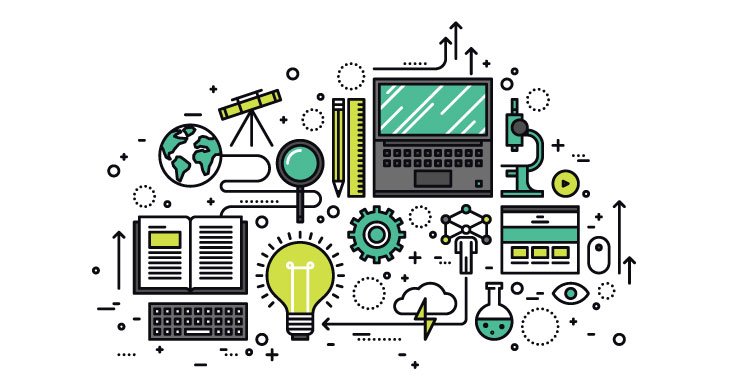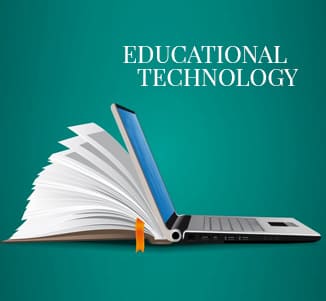Safeguard Your Future with Budget Friendly and Reputable Insurance
Safeguard Your Future with Budget Friendly and Reputable Insurance
Blog Article
Comprehensive Organization Guides for Advancing Technology Education in Schools and Colleges
The combination of technology education and learning right into college and university educational program has actually ended up being a vital necessary in preparing pupils for a significantly digital labor force. What particular strategies can be taken on to maximize their effect on both pupils and instructors?
Value of Modern Technology Education
As technology remains to progress at an unmatched pace, the relevance of innovation education and learning has actually become significantly apparent in today's culture. The combination of technology right into various aspects of life requires that people possess a fundamental understanding of technological ideas and applications. This knowledge not only boosts employability however additionally fosters critical reasoning and problem-solving abilities essential for navigating a vibrant workforce.
In schools, innovation education and learning equips trainees with the capacity to adapt to fast adjustments in industries driven by advancement. It urges creativity and equips students to involve with emerging innovations, from expert system to information analytics. Furthermore, innovation education and learning promotes digital proficiency, which is crucial in an age where details is conveniently available yet often deceptive.

Trick Parts of Effective Guides
Reliable overviews for technology education must incorporate several vital parts to make certain that students gain the most from their experiences. A well-defined curriculum is necessary, laying out the purposes, learning outcomes, and the skills to be developed. This curriculum ought to be frequently upgraded to show the quickly progressing technical landscape, making sure significance and applicability.
2nd, detailed sources that include textbooks, online materials, and hands-on devices are vital. These sources need to be diverse and available, dealing with various learning designs and choices. In addition, incorporating real-world situations and situation studies can boost understanding and interaction.
Third, evaluation strategies must be consisted of to examine learner progression properly. These evaluations need to be differed, including cumulative and formative analyses that align with the understanding goals.
Furthermore, professional development opportunities for educators are critical. Educating programs and workshops can equip instructors with the most up to date technical innovations and pedagogical strategies.
Lastly, fostering a collective learning atmosphere urges peer interaction and expertise sharing. By consisting of these essential parts, overviews for innovation education and learning can dramatically enhance the knowing experience, preparing students for future obstacles in a progressively digital world.
Building Sector Partnerships
Structure solid industry partnerships is a crucial facet of boosting technology education. These partnerships between universities and businesses create a dynamic community that benefits teachers, companies, and students alike. By cultivating partnerships with sector universities, leaders and colleges can straighten their educational programs with the progressing demands of the task market, making sure that trainees acquire relevant abilities and understanding.
The advancement of internships, instructions, and mentorship programs works as a foundation of these partnerships. Such opportunities provide pupils with hands-on experience, improving their employability and functional understanding of technology applications. Additionally, sector partners can offer understandings into arising patterns and anchor technical innovations, enabling educators to adjust their mentor methods as necessary.
Furthermore, partnerships can promote access to sources, such as equipment, software, and funding for study jobs. These contributions enhance the discovering setting and allow institutions to remain at the forefront of technical advancement. Inevitably, developing durable market More Info collaborations is vital for cultivating a knowledgeable labor force that fulfills the requirements these days's rapidly altering technical landscape, while also driving financial growth and competitiveness in the more comprehensive community.
Implementing Modern Technology Programs
Implementing innovation programs within universities calls for a tactical technique that focuses on both curriculum advancement and source appropriation. To initiate successful modern technology integration, institutions need to initially assess their existing facilities and recognize gaps in resources, including equipment, software program, and employees training. This evaluation makes it possible for universities and colleges to develop a tailored plan that aligns with their particular academic objectives.
Following, it is vital to create a comprehensive curriculum that integrates emerging innovations and market criteria. Teaming up with teachers, market professionals, and stakeholders can make sure that the educational program stays appropriate and effective in preparing students for the labor force (Education). Additionally, specialist growth for professors is critical, as it furnishes teachers with the skills needed to efficiently educate new innovations
Furthermore, establishments need to stress the value of hands-on discovering experiences, such as labs and workshops, that permit trainees to apply academic understanding in useful setups. This experiential approach improves engagement and cultivates crucial reasoning. Securing lasting financing through collaborations and gives can assist expand and keep technology programs, making certain lasting success and versatility in an ever-evolving technical landscape.
Measuring Success and Results
Assessing the success and results of technology education programs is vital for confirming their impact and leading future improvements. Efficient dimension frameworks must incorporate both quantitative and qualitative metrics, providing a comprehensive view of program efficiency. Key performance signs (KPIs) such as pupil enrollment figures, retention prices, and training course completion percentages use beneficial quantitative data.

Incorporating standardized evaluations can additionally review trainees' technological competencies and preparedness for the labor force. Benchmarking against comparable institutions enables contextually pertinent comparisons, highlighting locations for development.
Ultimately, the continual assessment of innovation education and learning programs promotes a society of renovation, guaranteeing that they advance abreast with market needs and educational requirements. By methodically measuring success, organizations can not just show liability to stakeholders but likewise boost their offerings, thus enhancing the finding out experience and preparing students for the ever-changing technological landscape.
Final Thought

The integration of technology education into institution and university educational program has actually come to be a vital necessary in preparing students for an increasingly digital workforce.As innovation continues to develop at an unmatched speed, the value of modern technology education and learning has actually come to be significantly noticeable in today's culture.In educational organizations, technology education gears up trainees with the capability to adapt to rapid changes in industries driven by innovation. By prioritizing technology education and learning, establishments can grow a generation of educated citizens qualified of leveraging innovation for social and personal innovation. The implementation of robust assessment strategies enables redirected here organizations to determine success and results, inevitably improving the overall effectiveness of modern technology education and learning efforts and preparing students for future difficulties.
Report this page